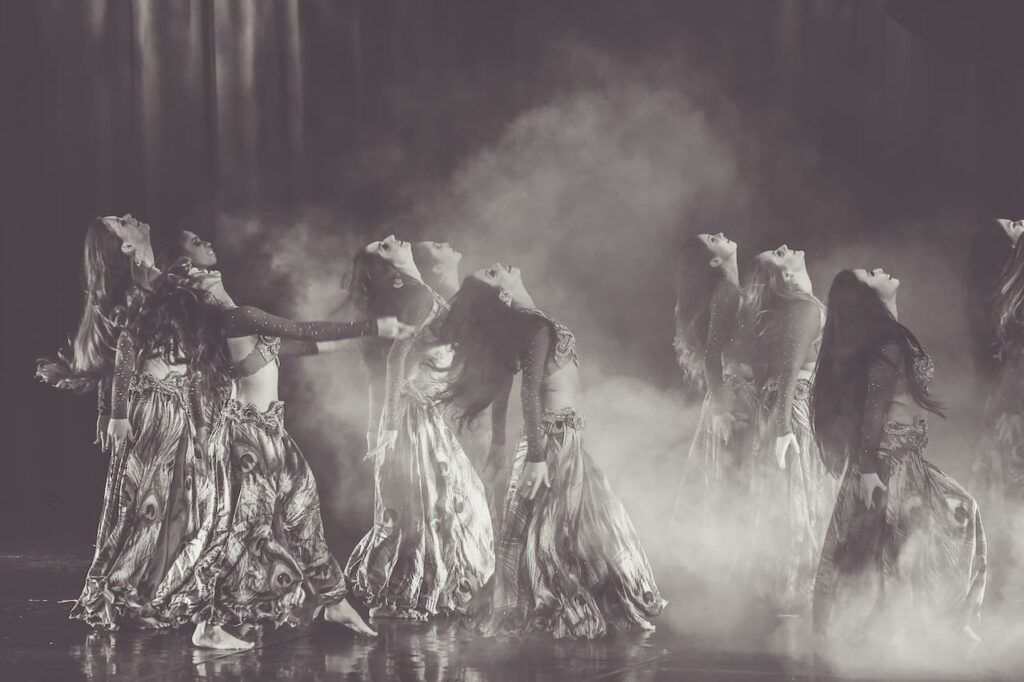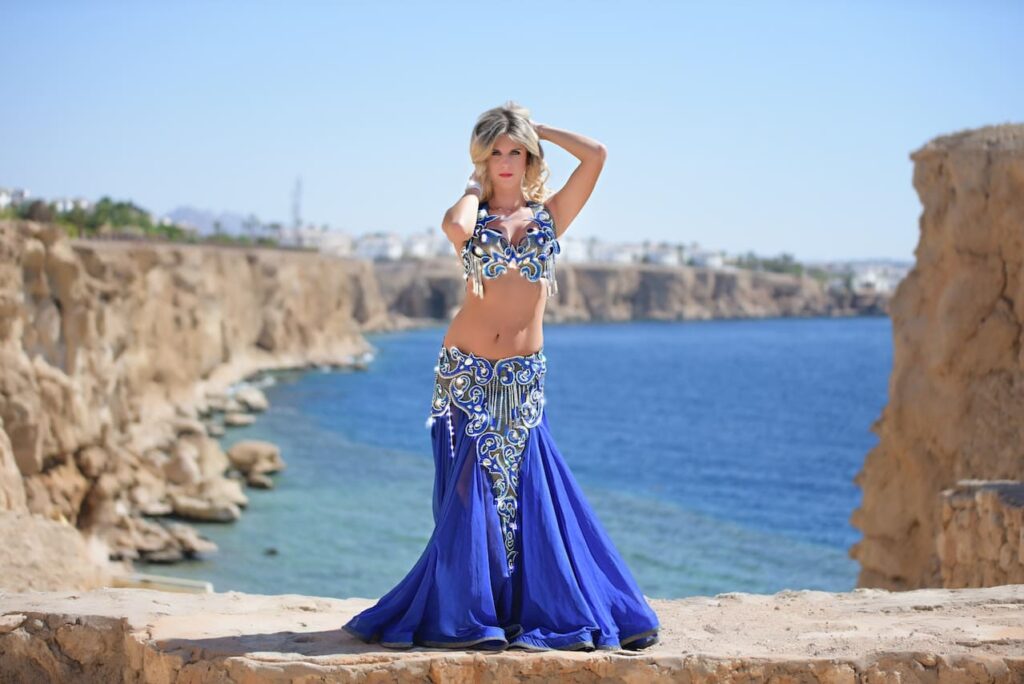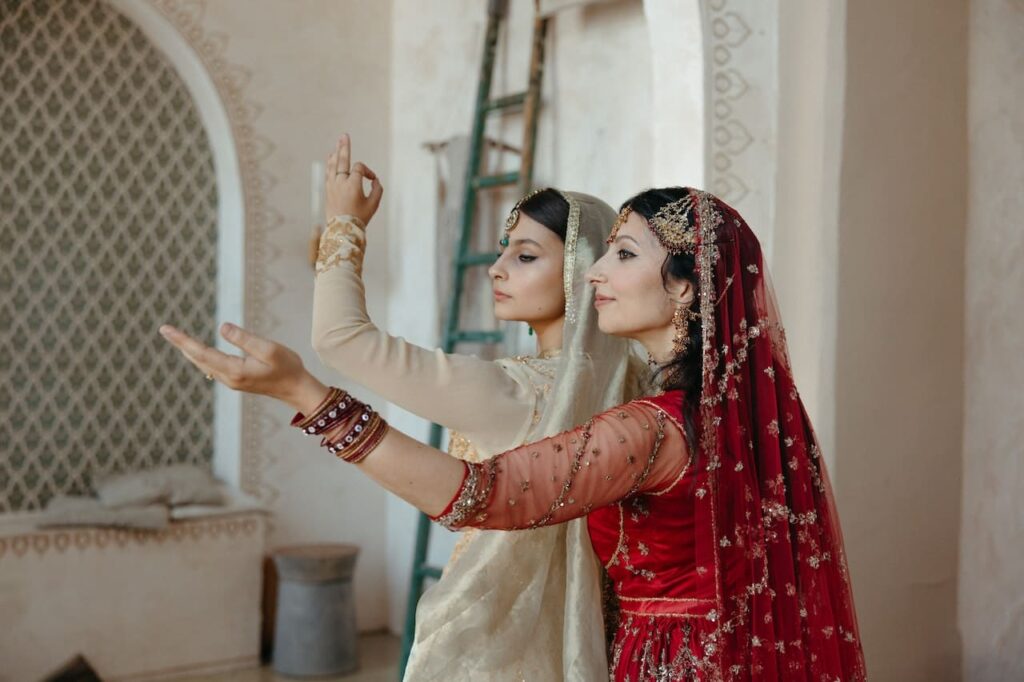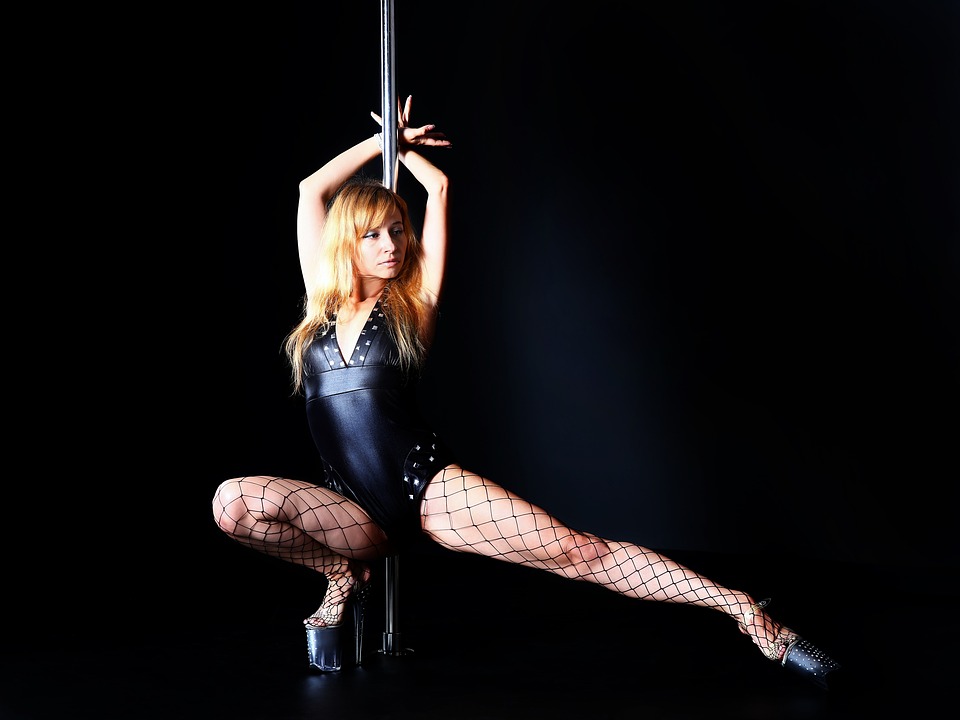
Summary
Welcome » Welcome » Guide to dance types » Oriental dance: know the dances that represent the Orient
Oriental dance: know the dances that represent the Orient
There Oriental dance is generally practiced by women. It is an opportunity for them to show their femininity and the feelings which animate them. The Middle East is filled with wealth and dance is one of them. From traditional oriental dances to popular dances, oriental dance has something to please as many people as possible.
Summary
History of oriental dance
Oriental dance, originating from the Maghreb and the Middle East, has established itself as one of the most festive and aesthetic dances. In its beginnings, it was an improvised and spontaneous dance. Today, there are various styles of oriental dances. But, this follows from his story which we will see shortly.
His origin
Oriental dance is born from a well-known dance, belly dance or raqs sharki. But the term “belly dance” has been considered reductive. It was Napoleon visiting Egypt who gave this name, knowing that in the country raqs sharki literally means “oriental dance”. Furthermore, oriental dance is recognized as one of the oldest dances in the world, particularly in the North African countries of Lebanon, Turkey and Egypt.
Many myths have been created around the arrival of oriental dance. Some believe it is linked to ancient fertility rites, esotericism and religion. But, in reality, there are very few reliable sources on this subject. But one thing is certain, oriental dance began to develop in Egypt with the arrival of Indians in the 10th century.
Dance under the Ottoman Empire
Under the Ottoman Empire, it was common for women from different nations to live together under a harem. Most of them were musicians, poets or scholars. They danced only among themselves and not in front of a male audience or a sultan because dancing conveyed a degrading image. Indeed, Westerners had a problematic relationship with the body stemming from religious puritanism. The dance had a vulgar image because it was only seen in places of prostitution.
Oriental dance in shows
It was from 1926, in Cairo, that oriental dance appeared in shows. In particular, thanks to the Syrian dancer Badia Masabni. In these places, we find mainly oriental dances of Egyptian origin since during the 1930s, Egyptian dancers acquired notoriety when Cairo became the capital for oriental dance shows. Growing notoriety, the dancers are trained with lessons in classic dance in order to merge stage gestures with movements and arabesques with oriental movements, in particular the pelvis movement. Even if this dance is appreciated in Europe, in Middle Eastern countries, it is disowned and the dancers are compared to prostitutes.
Egypt in the cinema
During the 1940s and 1950s, Egypt was the most important producer in the Middle East and, like Hollywood, the country produced musicals. Consequently, the profession of dancer and actress is becoming more democratic and women learn to dance. Egyptian culture is in the spotlight and great composers and singers do not hesitate to write music. Also, the dancers are influenced by several influences. In particular, Russian ballets, American musicals and popular Egyptian dances.
After which, in the early 1960s, the Reda brothers created a dance troupe where the choreographies combined the costumes and style of Egyptian folk dances mixed with the style of Russian ballets and Hollywood musicals. This marks a real turning point in Egyptian culture as dancers and teachers continue to evolve the style, technique and method of teaching oriental dance classes.

The raqs sharki
Raqs sharki is much more than a dance, it is a symbol of femininity, of passion and of grace. She has captured and inspired screens and shows around the world. The origin of this dance is subject to debate but it is clear that it was influenced by various cultures, notably the Ottoman and Egyptian empires.
Dance movements
The raqs sharki is danced with fluid and expressive movements which allow us to highlight the grace of the human body. To do this, the dancers use insulation, these are movements of a part of the body that moves independently of the rest. Then, to succeed in the dance, you must perform belly undulations, vibrations and hip rotations.
To complete the dance, traditional costumes are added. They typically consist of an ornate bra, veiled pants, or visible skirt and belt with beads, sequins, and sequins to accentuate the dancer's movements. The costumes carry'history and of meaning, reflecting the traditions from the country.
Finally, the music conveys the soul of dance. Indeed, the rhythms created by the darboukas and the drums as well as the wind instruments put the spectators in a hypnotic atmosphere.
Folk dances
Oriental folk dances are specific to a region. Indeed, the saïdi for example comes from Upper Egypt or the melaya from the Alexandria region. These dances all have a particularity, which we will see now.
The saidi
The origins of saïdi come from an ancestral Egyptian martial art which is practiced with a stick against a background of music played with percussion and a wind instrument called Tahtib. At the time, this sport was practiced exclusively by men.
Movements
Tahtib steps were eventually incorporated into the dance during the 1950s to highlight Egyptian folklore and elevate it to artistic status. Thus, the saïdi was born from a imitation of tahtib combat forms accompanied by a cane or a stick decorated with belly dance and western dance movements.
Women dance in dresses with a cane with a scarf around their heads. THE movements are feminine with a less linear and less static posture with a slight game of seduction. The dance is vertical with some downward movements towards the earth. Also, you will find bounces towards the ground, flat foot movements, downward shoulder thrusts by being anchored in the ground.
The melaya
The melaya is named after the black veil with which it is danced. Its origins are attributed to Egypt. It is a reflection of the traditions and culture of the country. Indeed, in the 19th century, it was used for women belonging to the working classes and who worked as fish sellers in markets.
The maleya is the main feature of the dance. This garment is often black, decorated with traditional motifs worn by a dancer. If it is present, it is for accentuate body movements. Plus the dancer does it twirl And wave around her synchronization with the choreography.
The dance is characterized by ample and fluid movements of the trunk, hips and arms. As to travel, they are slow And accurate. The hips are mainly used for insulation and undulations which are key movements of the dance.
Fellahi dance
Fellahi dance originates from rural regions, it characterizes the cultural identity of many peoples. Much more than a dance, it is a means of expression for the communities attached to it. In fact, it allows us to tell stories stories, of the rituals and celebrations.
This dance is a visually rich spectacle due to its specific movements and his footsteps. Moreover, it creates an immersive atmosphere for spectators. This is felt by its graceful and fluid movements like traditional melodies and rhythms.
Also, within the dance you will find costumes and essential accessories. The outfits are colorful, decorated with pearls or embroidery. Concerning the accessories, there are sticks or scarves to accentuate the movements and give a symbolic dimension to the dance.
As for music, there are drums, a lute and a flute.
The ghawazee
Ghawazee is a gypsy dance originating from India, more precisely from the Nawaar tribe who immigrated to Egypt.
This dance is described as overflowing with energy, particularly for its quick, rhythmic movements of the hips, arms and legs with a agility controlled.
As with the previous dances, the outfits are also important. Here the outfits, mostly full skirts and swirling shawls, are colorful and richly decorated.
The music is composed of percussion, stringed instruments, melodies and exuberant singing. Thus, a synchronization between musicians and dancers takes place, creating a symbiosis.
Popular dances
Popular oriental dances are dances performed both in a private setting and for festivities.
The baladi
The baladi dance or “country dance” which finds its origins in the working-class neighborhoods of Egyptian cities. In the past, it was practiced in the streets, cafes and neighborhood parties. It is a dance deeply rooted in Egyptian culture reflecting traditions and joy.
This dance is distinguished by its ground anchor, his movements and his undulations elegant hip and pelvis. Furthermore, the baladi aims to tell a story, so the dancers do not hesitate to use their faces to convey emotions.
The outfits worn by the dancers are simple but elegant to emphasize the movements. These are usually full skirts and delicate scarves.
Additionally, baladi is often performed in community and social settings. It is therefore important for dancers to establish interactions with the audience, inviting them to participate.
The shaabi
Shaabi dance originated in the neighborhoods of major Egyptian cities such as Cairo. It comes from a mixture of musical and dance traditions with contemporary influences.
One of the most striking characteristics of this dance are its rapid, dynamic movements of the feet, hips and arms. In addition, the steps match perfectly with the music, notably thanks to the brisk and marked foot movements by creating rhythms between quick steps and moments of pause. Furthermore, the energy of the dance comes from Egyptian folklore and contemporary hip hop.

To conclude
During this article we have seen different types of oriental dances. The first category is the raqs sharki. It is part of traditional dances, essentially composed of fluid and expressive movements, belly undulations, vibrations and rotations of the hips.
Next, we reviewed the oriental folk dances, notably the saidi and the melaya.
Finally, we were interested in popular dances with the baladi and the shaabi.
Go on a dancing adventure with DECIBEL®
Are you interested in oriental dances, but you don't know how to start dancing? Learn the basic movements at DECIBEL®!
Enjoy an immersive experience with 45 minute dance workout sessions. Come onwork on your cardio And strengthen your abs as well as your hamstrings and glutes sure ofs custom-made choreographies accompanied by coaches ready to do anything to help you progress. In addition, to motivate you as best as possible, playlists ranging from Drake to Beyoncé are set up to soften your ears against the backdrop of dim light.
Enough to dance in the best conditions!
Read also
follow us
on instagram
Follow our news,
take advantage of our tutorials and participate to our
contests!
BREAKING NEWS!
Receive our newsletter.






